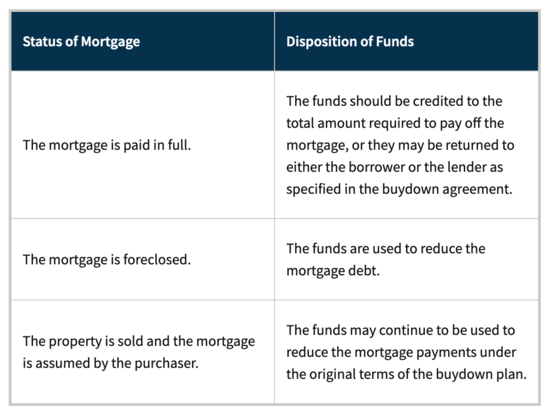Final week, I argued that mortgage charges stay in a downward pattern, regardless of some pullback these days.
The 30-year fastened had nearly been sub-6% when the Fed introduced its price reduce. That “promote the information” occasion led to somewhat bounce for charges.
Then a hotter-than-expected jobs report days later pushed the 30-year as much as 6.5% and charges saved creeping increased from there.
They’re now nearer to six.625% and have reignited fears that the worst might not but be behind us.
Whether or not that’s true or not, you possibly can’t get a price as little as you possibly can simply three weeks in the past, and that makes the momentary buydown engaging once more.
You Don’t Get Your Cash Again on a Everlasting Buydown
Whereas some dwelling consumers and mortgage refinancers have been capable of lock-in sub-6% charges in September, many at the moment are charges nearer to 7% once more.
This has made mortgage charges unattractive once more, particularly since there aren’t many lower-cost choices round as of late, resembling adjustable-rate mortgages.
You’re mainly caught going with a 30-year fastened that isn’t price holding for anyplace near 30 years.
And also you’re paying a premium for it as a result of the speed gained’t regulate for the complete mortgage time period.
One choice to make it extra palatable is to pay low cost factors to get a decrease price from the get-go.
However there’s one main draw back to that. Whenever you purchase down your price with low cost factors, it’s everlasting. This implies the cash isn’t refunded in case you promote or refinance early on.
You truly must maintain the mortgage for X quantity of months to interrupt even on the upfront price.
For instance, in case you pay one mortgage level at closing on a $500,000 mortgage, that’s $5,000 that may should be recouped by way of decrease mortgage funds.
If charges occur to drop six months after you are taking out your private home mortgage, and also you refinance, that cash isn’t going again in your pocket.
It’s gone perpetually. And that may clearly be a really irritating state of affairs.
Is It Time to Think about a Momentary Buydown Once more?

The opposite choice to get a decrease mortgage price is the momentary buydown, which because the identify implies is simply momentary.
Usually, you get a decrease price for the primary 1-3 years of the mortgage time period earlier than it reverts to the upper be aware price.
Whereas these have been painted as higher-risk as a result of they’re akin to an adjustable-rate mortgage, they might nonetheless bridge the hole to decrease charges sooner or later.
And maybe most significantly, the cash spent on the momentary buydown is refundable!
Sure, even in case you go together with a short lived buydown, then refinance or promote a month or two later, the funds are credited to your excellent mortgage stability.
For instance, in case you’ve received $10,000 in momentary buydown funds and abruptly charges drop and a price and time period refinance is smart, you possibly can take benefit with out dropping that cash.
As an alternative of merely consuming the remaining funds, the cash is usually used to pay down the mortgage, as defined in Fannie Mae’s chart above. Say you’ve received $9,000 left in your momentary buydown account.
Whenever you go refinance, that $9,000 would go towards the mortgage payoff. So if the excellent mortgage quantity have been $490,000, it’d be whittled right down to $481,000.
Apparently, this might additionally make your refinance cheaper. You’d now have a decrease mortgage quantity, probably pushing you right into a decrease loan-to-value (LTV) tier.
What Are the Dangers?
To sum issues up, you’ve received three, perhaps your choices when taking out a mortgage at this time.
You possibly can go together with an ARM, although the reductions usually aren’t nice and never all banks/lenders supply them.
You possibly can simply go together with a 30-year fastened and pay nothing in closing for a barely increased price, with the intention of refinancing sooner fairly than later.
You possibly can pay low cost factors at closing to purchase down the speed completely, however then you definately lose the cash in case you promote/refinance earlier than the break-even date.
Otherwise you go together with a short lived buydown, take pleasure in a decrease price for the primary 1-3 years, and hope to refinance into one thing everlasting earlier than the speed goes increased.
The chance with an ARM is that the speed finally adjusts and could possibly be unfavorable. As famous, they’re additionally exhausting to return by proper now and will not supply a big low cost.
The chance with a regular no price mortgage is the speed is increased and you possibly can be caught with it if charges don’t come down and/otherwise you’re unable to refinance for no matter cause.
The chance with the everlasting purchase down is charges might proceed falling (my guess) and also you’d depart cash on the desk.
And the chance of a short lived buydown is considerably just like an ARM in that you possibly can be caught with the upper be aware price if charges don’t come down. However not less than you’ll know what that be aware price is, and that it might probably’t go any increased.
Learn on: Momentary vs. everlasting mortgage price buydowns

